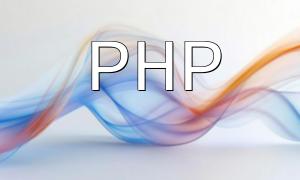With the rapid development of the internet, website traffic is increasing, which places higher demands on website performance and response ability. Cache technology, as an effective optimization method, can significantly improve website response speed. This article will introduce how to implement a caching mechanism using PHP to improve website performance, along with specific code examples.
Cache is a technology that stores data in fast-access locations to improve data retrieval speed. In website development, cache can store frequently used data, pages, or database query results in memory or files, avoiding repetitive calculations and database access, thereby enhancing website response speed.
In PHP, a custom cache class can be used to implement caching functionality. Below is an example of a simple cache class implementation:
class Cache {<br> private $cache_dir; // Cache folder path<br> private $expiry; // Cache expiry time<br> public function __construct($cache_dir, $expiry = 3600) {<br> $this->cache_dir = $cache_dir;<br> $this->expiry = $expiry;<br> }<br><br> public function get($key) {<br> $file = $this->cache_dir . '/' . $key;<br> if (file_exists($file) && (filemtime($file) + $this->expiry) > time()) {<br> return unserialize(file_get_contents($file));<br> }<br> return false;<br> }<br><br> public function set($key, $data) {<br> $file = $this->cache_dir . '/' . $key;<br> file_put_contents($file, serialize($data));<br> }<br><br> public function delete($key) {<br> $file = $this->cache_dir . '/' . $key;<br> if (file_exists($file)) {<br> unlink($file);<br> }<br> }<br>}<br>Using cache is very simple. First, instantiate the cache class, then use the `get()` method to retrieve cached data. If the cache is not hit, perform the logic and store the result in the cache:
$cache = new Cache('cache_dir');<br>$data = $cache->get('key');<br>if ($data !== false) {<br> echo $data;<br>} else {<br> $result = "Logic Result";<br> echo $result;<br> $cache->set('key', $result);<br>}<br>By using this method, you can avoid repeated calculations and directly use data from the cache, improving response time.
In some cases, you may need to delete the cache. You can do this using the `delete()` method:
$cache->delete('key');<br>In addition to caching entire pages, you can also implement more granular caching, such as caching database query results, template files, and static resource files. For database query results, you can use the database's caching mechanism or store the query results in the custom cache class. For template files and static resources, you can utilize HTTP caching mechanisms by setting the appropriate HTTP headers to inform the browser of the cache duration.
By using PHP caching techniques, you can effectively improve website response speed and performance, reduce server load, and enhance user experience. Proper use of cache can avoid repeated calculations and database access, minimize I/O operations, and significantly improve website performance. However, it is essential to keep an eye on cache updates and expiration to ensure that cached data remains timely and accurate.
The above content introduces how to develop cache using PHP to improve website response ability. I hope these methods and code examples are helpful for optimizing your website.








